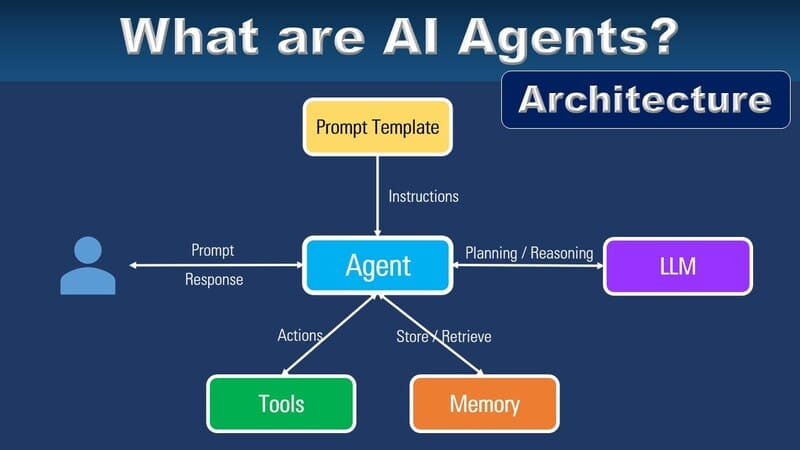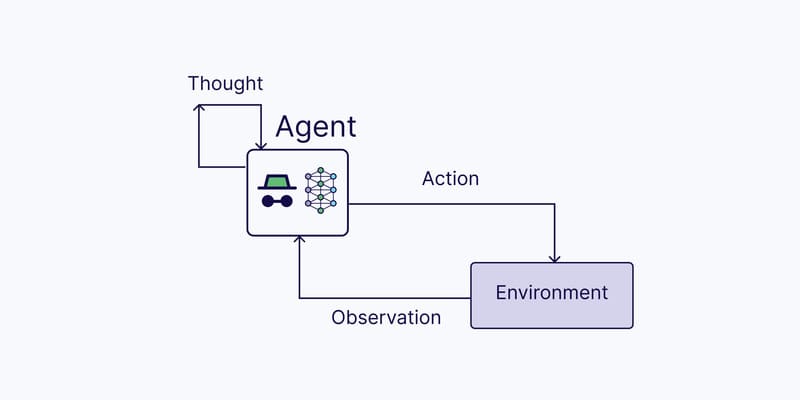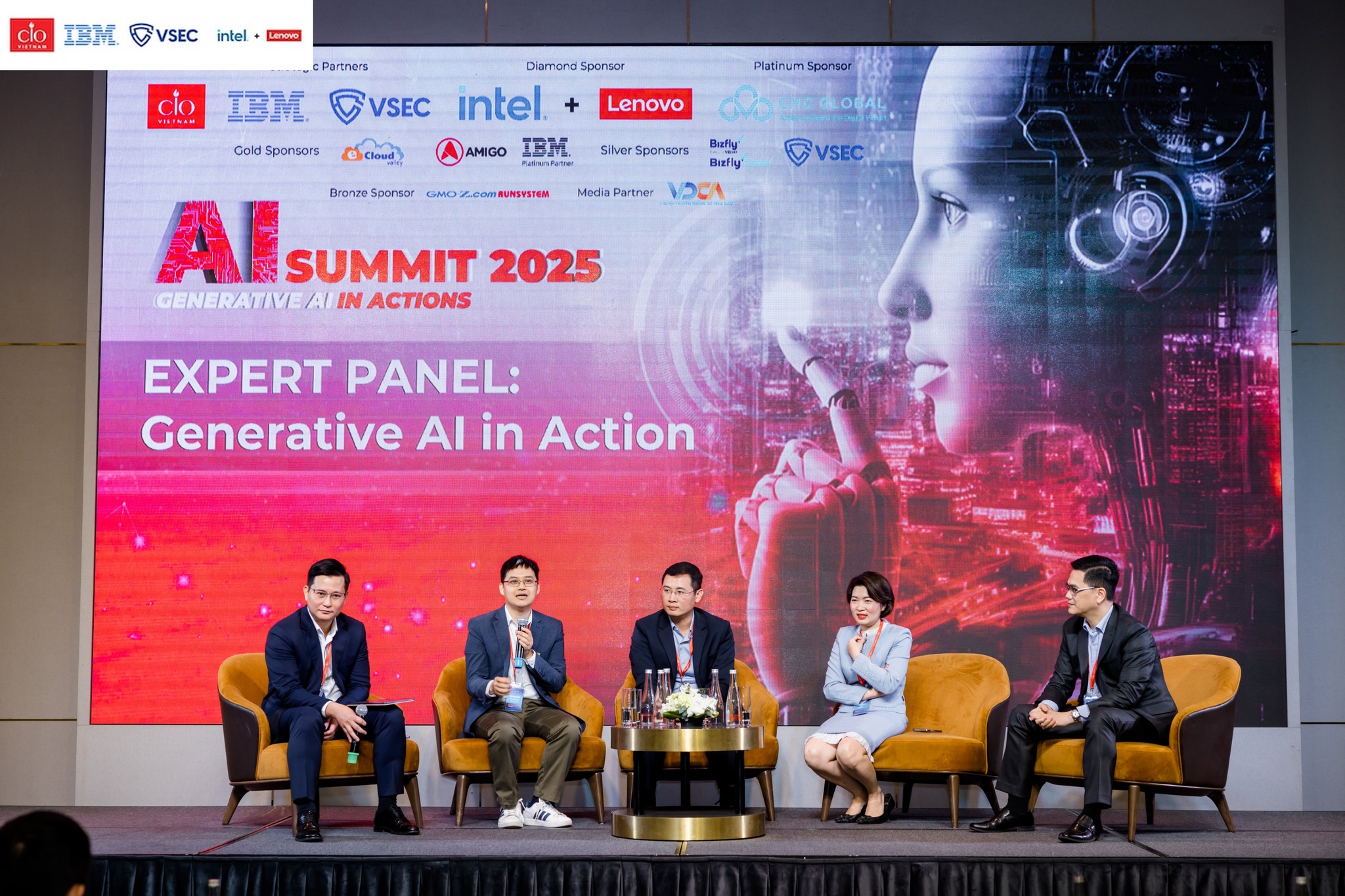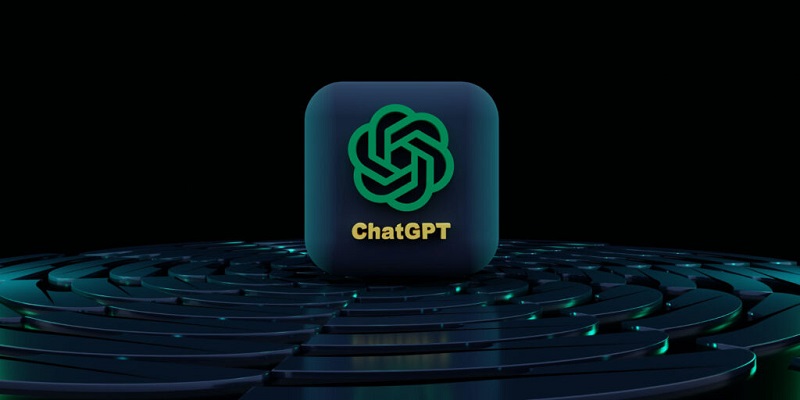Banks are expending millions, even billions of dollars for AI to improve customer experience, optimize operations and create competitive advantages.
Last week, VietCapital Bank signed a cooperation agreement on using trueID to automatically authenticate customer information for its system. This solution is electronic Know Your Customer (eKYC) on mobile apps, built on AI – Artificial Intelligence, Facial Recognition and Optical Character Recognition technology. The main features of trueID are to detect fake identification, use Optical Character Recognition – (OCR) and Facial Recognition, and identify real humans in selfies.
Mr. Le Van Be Muoi, Vice Director of Ban Viet Bank, said that investing in trueID will shorten the process of providing products and services to customers (online account opening, card services, e-banking), make it safe and convenient.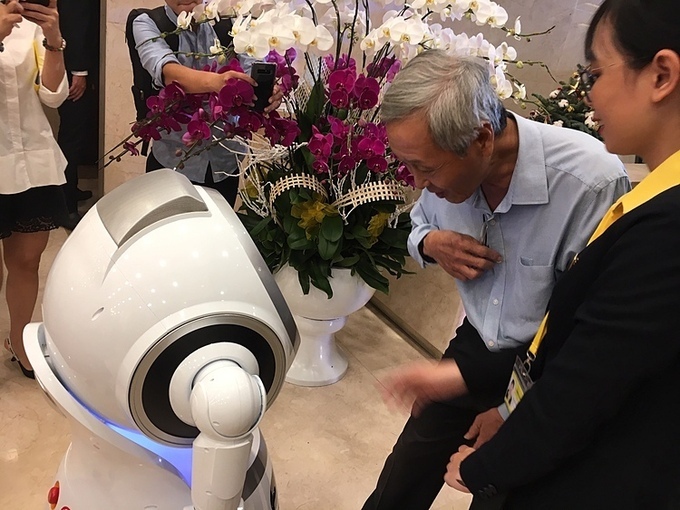
Customers are communicating with OPBA robot of Nam A Bank. Photo: Le Chi
At the end of 2019, Nam A Bank launched a digital transaction service, used OPBA robot and became the first bank in Vietnam to have a service robot. According to Nam A Bank representative, OPBA robot with Artificial Intelligence is programmed to automatically move and greet as soon as customers enter. It also has the ability to recognize faces (Face Detection) to accurately identify customers. The robot collects customer information to store, analyze, understand needs, consult, give instructions and actively interact with users.
This bank expects OPBA robot to make a breakthrough in digitization, creates a new experience for customers in digital technology and saves time spent on transactions. Besides robots, Nam A Bank has applied chatbot, integrated it into fanpage, website or mobile apps. Its ability to quickly respond, consult helps connect more strongly with customers and increase customer satisfaction.
“This is a lever for us to transform the model from traditional to multi-space one on multiple channels, increase competitiveness, sustainably develop, and contribute to the creation of a new technological wave”, Mr. Tran Khai Hoan – Vice Director of Nam A Bank said.
In fact, the wave of technology investment in digital banking has occurred for many years in Vietnam. TPBank is one of the first units in Vietnam to apply AI when it launched virtual assistant T’Aio on Facebook in July 2017. T’Aio can interact with more than 1.5 million TPBank customers at the same time on Facebook Messenger.
When receiving requests from customers, the response speed of T’Aio is less than 5 seconds. It operates 24/7 and constantly learns and develops through supporting customer, gradually become more intelligent thanks to Artificial Intelligence.
Late last year, this bank invested a million USD on upgrading Internet banking to another digital bank version. The new version of TPBank is integrated with many technologies such as Machine Learning, Artificial Intelligence (AI), flexible Enterprise Service Bus (ESB) like lego bricks, ready for every connection to expand TPBank digital ecosystem.
A customer of the bank uses the virtual agent.
Some other banks in Vietnam promote AI applications in services to enhance customer experience. Vietcombank has an app with AI -VCBPAY – to provide customers online payment and money transfer service with the assistance of Chatbot – Virtual Agent. MSB is the first bank to use AI in credit card opening, etc.
Not only is AI applied for call centers, customer service, it can also be used in each bank’s operating model or integrated into services to improve user experience. The main trends can be personalized customer experience, enhanced security, sample recognition and fraud detection, etc.
Experts assess that the development of technology has advantages for banks to create new products and services meeting needs of customers. Moreover, AI also can analyze transactions from the past to the present, typical customer behaviors to detect problems and avoid fraud; manage cash flow; consult on investment, etc.
Modern technology platforms, advanced products and services contribute to banks’ fast growth, safety, risk management with international standards. “The trend in Vietnam’s financial sector shows that this technology is being applied in many activities to digitize banks, improve performance, and provide a convenience for users along with reducing costs”, an expert said.
Not only in Vietnam, but the application of AI in operation and customer attraction is also a general trend in the banking and finance industry around the world. In 2016, JPMorgan invested more than 9.5 billion USD, and Bank of America spent more than 3 billion USD in new technology research, most of which for AI technology breakthroughs.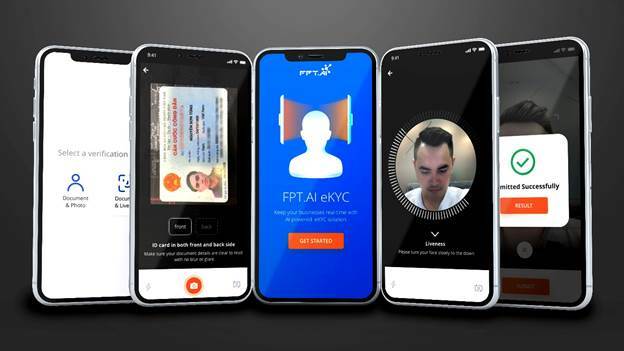
FPT.AI eKYC – electronic Know Your Customer – identifies customers coming for transactions in just a few seconds.
Cornerstone’s report showed that in 2019, about 13% of financial institutions surveyed had implemented chatbot applications, 11% of them were building AI applications, most of which showed great attention to new technologies that apply AI to their products and services.
Chatbots are considered as the most common form of AI application in banks. This tool can answer customers’ questions with accuracy and speed. Chatbots equipped with AI can learn by themselves to become smarter, thereby improving the quality of communication and customer service over time. Also, with the ability to operate automatically 24/7 of chatbots, banks can interact regularly with users while reducing the workload for consultants and optimizing operating costs.
According to a Business Insider’s study, banks around the world could save $447 billion if they apply AI to their transaction activities and could save more $420 billion if they use this technology in offices. Along with Robotic Process Automation (RPA), AI will be a new technological trend in the banking and finance industry.
——————————————–
![]() Trải nghiệm các sản phẩm của #FPT_AI tại: https://fpt.ai/vi/
Trải nghiệm các sản phẩm của #FPT_AI tại: https://fpt.ai/vi/
![]() Hotline: 0911886353
Hotline: 0911886353
![]() Email: support@fpt.ai
Email: support@fpt.ai








